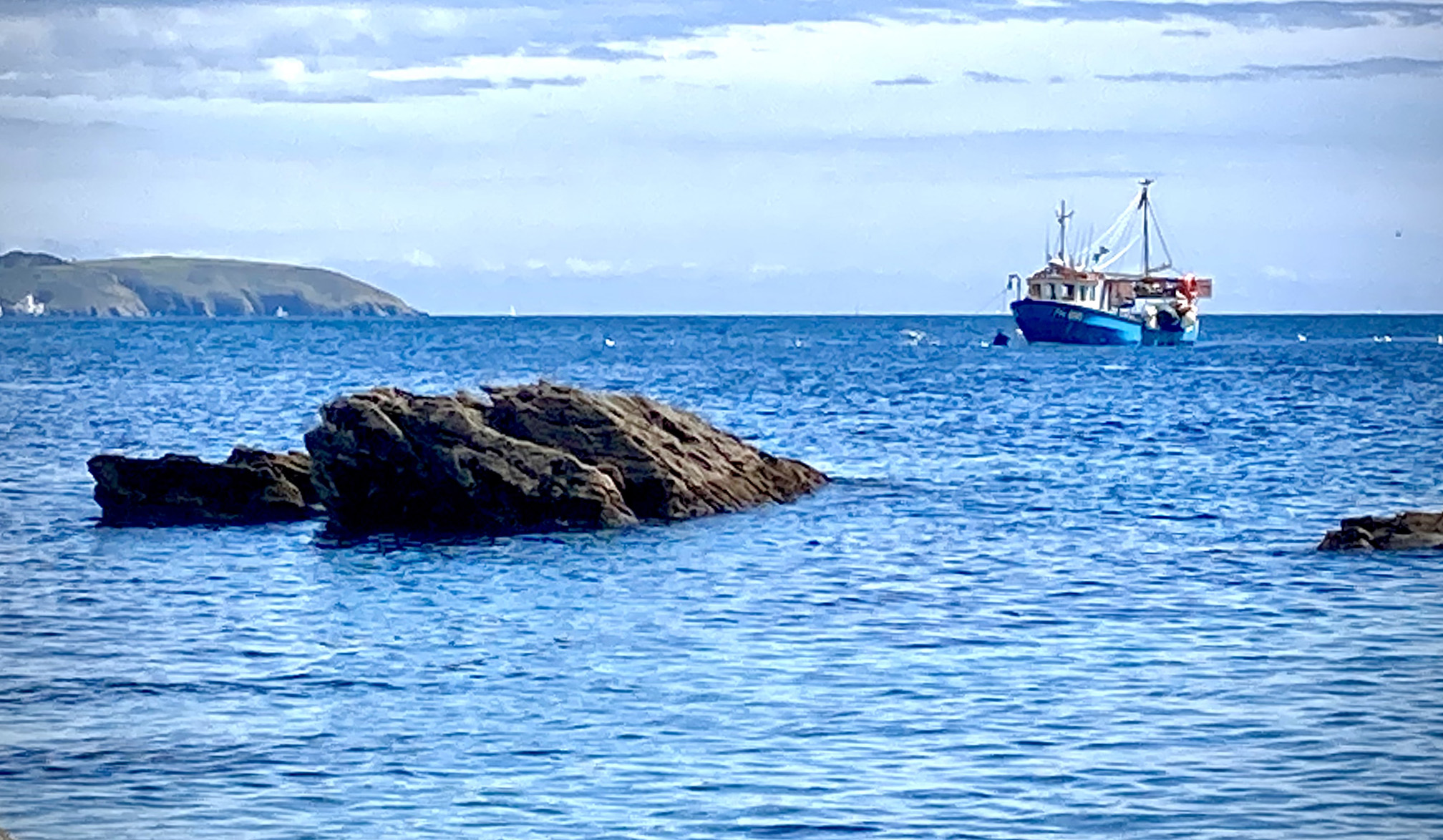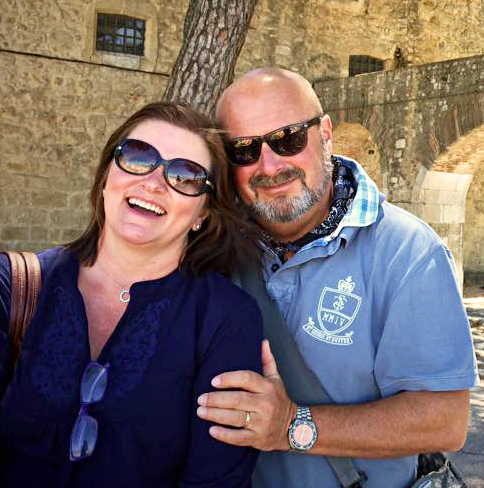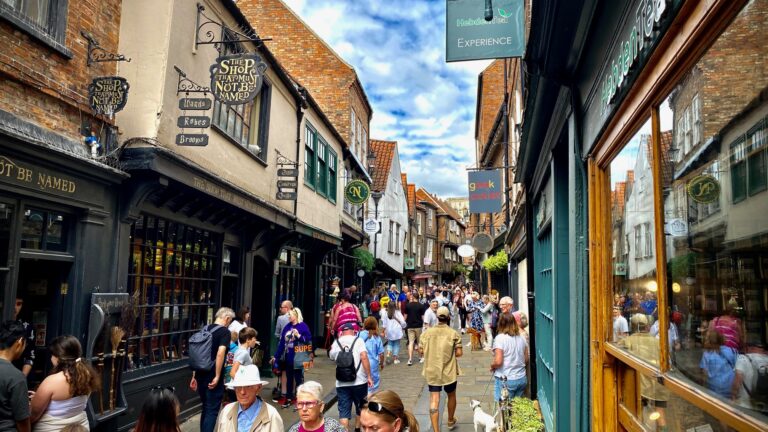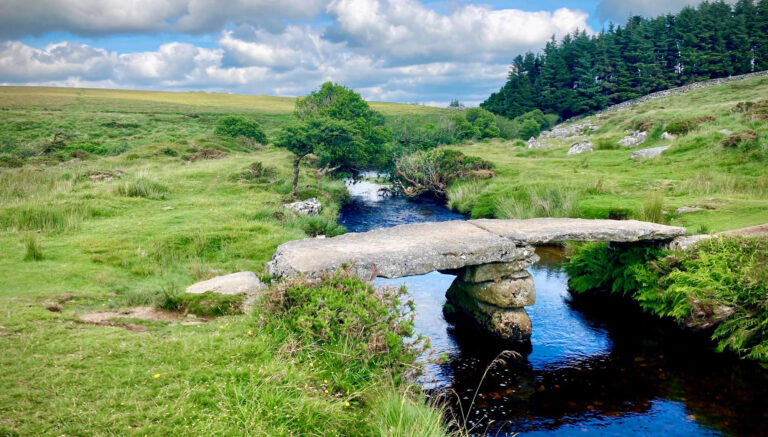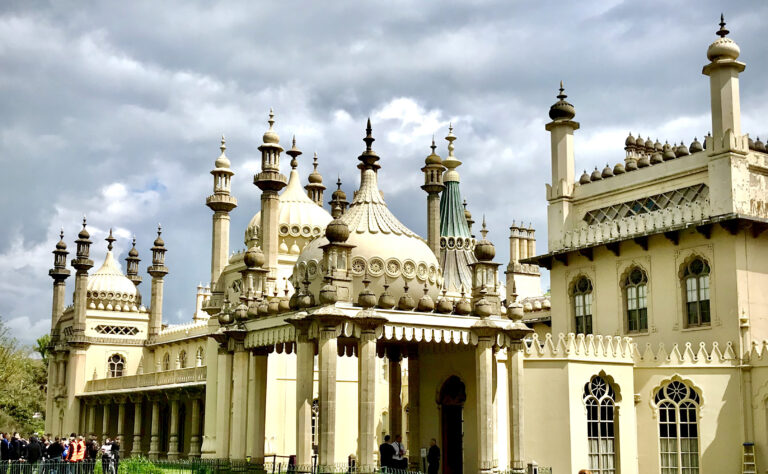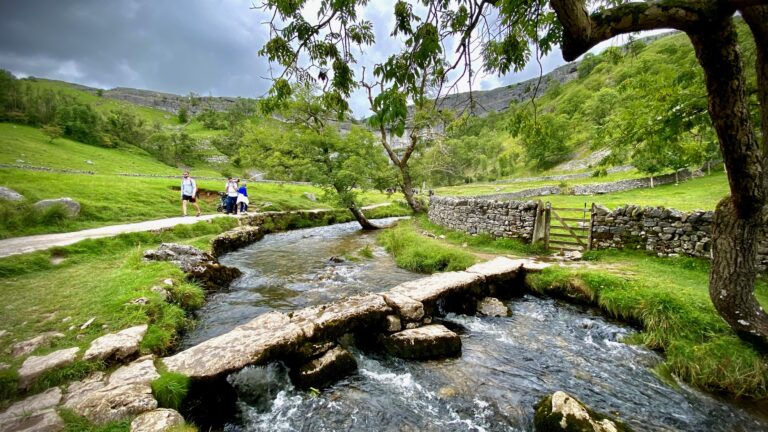Things to do in Cornwall: Off the Beaten Track
Take the road less travelled and uncover Cornwall’s best-kept secrets.
Cornwall is a beautiful county located in the southwestern part of England. With its picturesque coastal towns, sandy beaches, and scenic countryside, it is no wonder that Cornwall is a popular destination for tourists from all over the world.
However, many visitors to Cornwall only scratch the surface of what this stunning county has to offer. In this article, we will delve deeper and explore the lesser-known hidden gems in Cornwall that are waiting to be discovered.
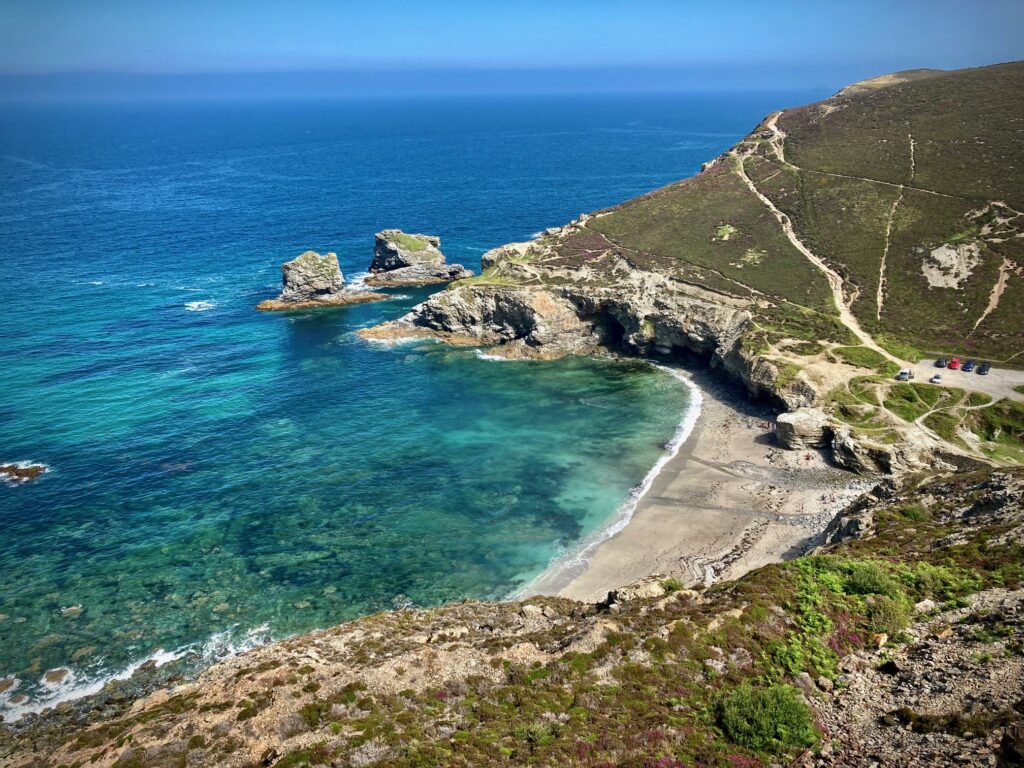
Why Cornwall is worth Exploring
Cornwall’s unique and diverse landscape Cornwall’s landscape is incredibly diverse, from its rugged coastline to its rolling hills and countryside. Visitors to Cornwall can explore the moors, cliffs, beaches, and forests, all within a relatively small area. Cornwall also boasts a rich variety of flora and fauna, making it a haven for nature lovers.
The Rich History and Culture of Cornwall
Cornwall has a fascinating history, and visitors can discover the county’s heritage at many historical sites, such as castles, ruins, and prehistoric sites. Cornwall also has a unique culture, with its own language, cuisine, and festivals that reflect its Celtic roots.
The Allure of Cornwall’s Beaches and Coastal Towns
Cornwall has some of the most beautiful beaches and coastal towns in the UK. From the popular St Ives and Newquay to the lesser-known gems like Porthcurno and Polzeath, there is something for everyone. Cornwall’s beaches are perfect for surfing, swimming, and sunbathing, while the coastal towns offer charming harbours, independent shops, and delicious seafood.
This website is supported by our readers, so if you buy through links on this site we may earn a small commission at no extra cost to you.
Discovering Cornwall’s lesser-known treasures
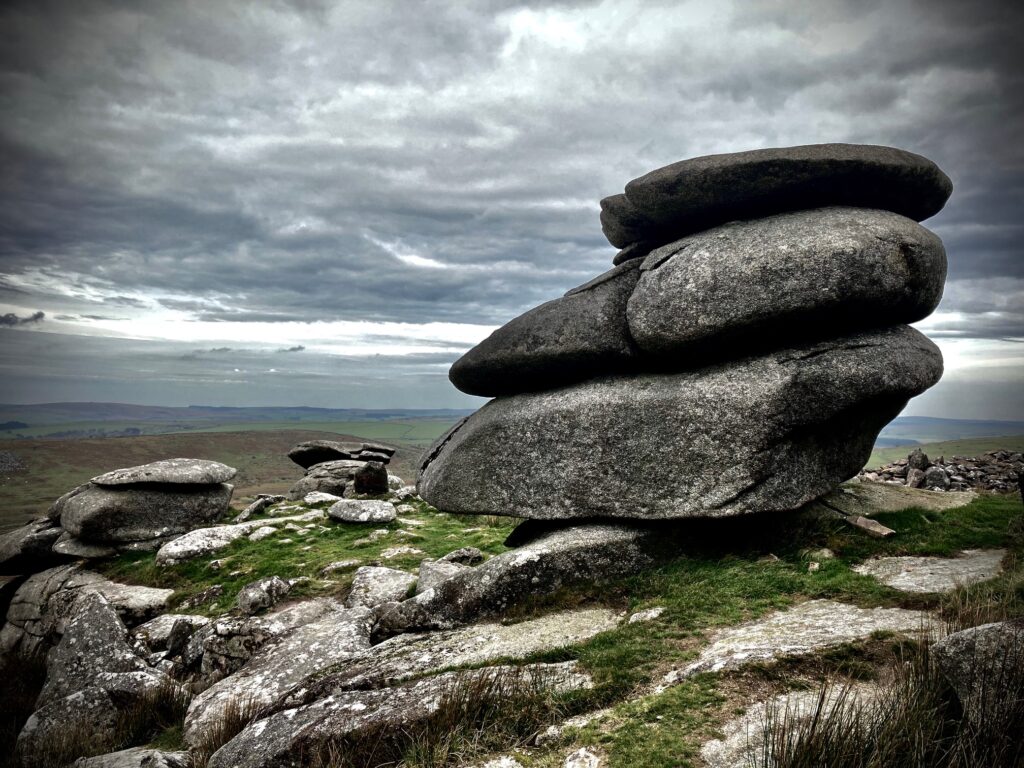
The benefits of exploring off the beaten track, allow visitors to avoid crowds and discover hidden gems that are not on the usual tourist trail. In Cornwall, this means exploring the countryside, where visitors can discover quaint villages, ancient woodlands, and scenic walks.
Hidden gems in Cornwall’s countryside are full of hidden treasures, from the wildflower meadows of Bodmin Moor to the ancient woodlands of the Helford River. Visitors can explore the country lanes, discover hidden hamlets and villages, and enjoy the peace and tranquillity of rural Cornwall.
The Moors of Cornwall
Bodmin Moor
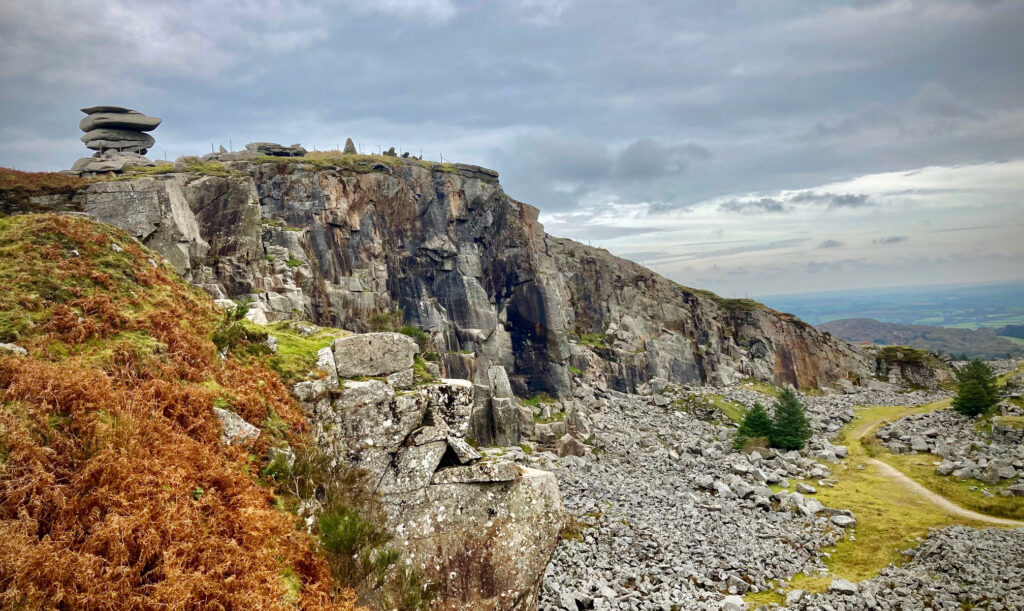
Are you looking for a unique and captivating destination to explore in Cornwall? Look no further than Bodmin Moor. Nestled amidst the beautiful landscape of Cornwall, Bodmin Moor offers a perfect blend of history, natural beauty, and outdoor activities. In this article, we will delve into the must-see attractions and experiences that await you on Bodmin Moor.
Introduction
Bodmin Moor is a vast expanse of open moorland located in the heart of Cornwall, England. Covering an area of over 200 square kilometres, it is a designated Area of Outstanding Natural Beauty (AONB) and a Site of Special Scientific Interest (SSSI). With its rugged terrain, mystical ambience, and rich history, Bodmin Moor attracts visitors from all over the world.
Overview of Bodmin Moor
Bodmin Moor has a long and intriguing history, dating back thousands of years. The moorland is characterized by its rolling hills, granite tors, and expansive heather-covered landscapes. It is home to numerous ancient sites, including stone circles, burial chambers, and standing stones. The area’s geological features and diverse wildlife make it a haven for nature enthusiasts and outdoor adventurers alike.
Historical Significance
Neolithic and Bronze Age Sites
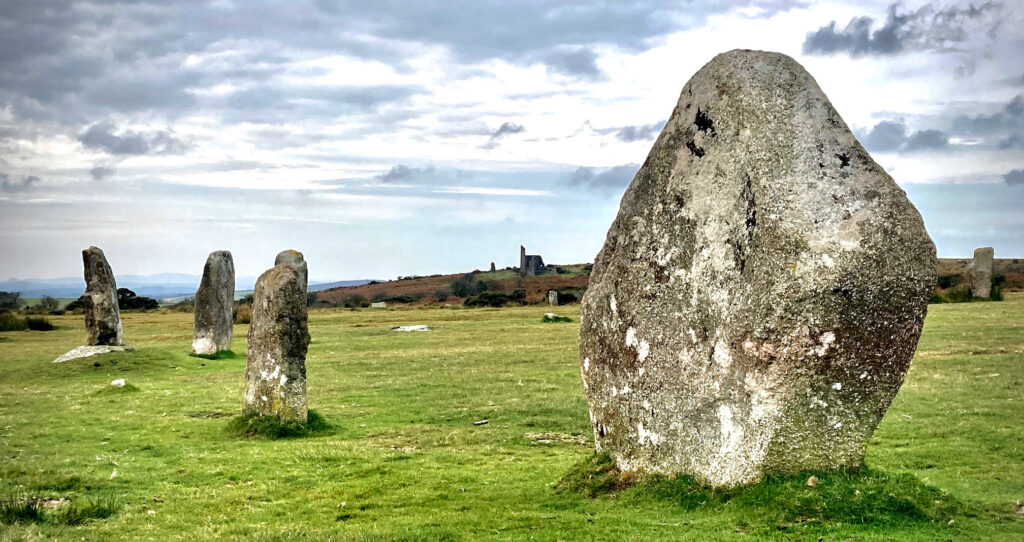
Bodmin Moor is steeped in ancient history, with a wealth of Neolithic and Bronze Age remains scattered across the landscape. Visitors can explore mystical stone circles like the Hurlers, where legend has it that local men were turned to stone for playing a game of hurling on a Sunday. Additionally, the Bronze Age burial chamber known as Trethevy Quoit provides a fascinating glimpse into the past.
Mining Heritage
During the 19th century, Bodmin Moor played a crucial role in Cornwall’s mining industry. The area was rich in copper and tin, and remnants of this industrial heritage can still be seen today. The iconic Cheesewring, a towering granite rock formation, stands as a testament to the mining activities that once took place on the moor.
Natural Beauty and Wildlife
Granite Tors
One of the most distinctive features of Bodmin Moor is its granite tors. These majestic rock formations rise from the moorland, creating a dramatic and picturesque landscape. Brown Willy and Rough Tor are two of the highest tors in Cornwall, offering panoramic views of the surrounding countryside.
Moorland Flora and Fauna
Bodmin Moor boasts a unique ecosystem, supporting a diverse range of flora and fauna. Heather, gorse, and bilberry cover the moorland, painting it in vibrant colours throughout the year. The area is also home to various bird species, including buzzards, kestrels, and skylarks. If you’re lucky, you might even catch a glimpse of the elusive Bodmin Moor ponies that roam freely across the moor.
Outdoor Activities
Hiking and Walking Trails
With its vast network of footpaths and trails, Bodmin Moor is a paradise for hikers and walkers. The Copper Trail and the Camel Trail are popular routes that showcase the moor’s beauty while offering a chance to explore its hidden gems. From leisurely strolls to challenging hikes, there is a trail for every level of adventurer.
Cycling Routes
Cycling enthusiasts will find plenty to enjoy on Bodmin Moor as well. The Camel Trail, a converted railway line, provides a fantastic cycling experience for all ages and abilities. The moor’s quiet country lanes also offer scenic routes for those seeking a more challenging ride.
Bodmin Moor Legends and Folklore
Bodmin Moor is shrouded in legends and folklore that add to its mysterious allure. The tales of the Beast of Bodmin, a large wild cat rumoured to roam the moor, have captured the imagination of locals and visitors alike. Exploring the moor with its ancient sites and eerie landscapes, you can’t help but feel the enchantment of these stories.
Pubs and Local Cuisine
After a day of exploration, why not unwind in one of the traditional pubs dotted around Bodmin Moor? These charming establishments offer a warm welcome and a chance to savour some local cuisine. Indulge in a hearty Cornish pasty, sample a traditional Cornish ale, or try the famous Cornish cream tea for a true taste of the region.
How to Get There
Bodmin Moor is easily accessible by car and public transportation. The town of Bodmin serves as the gateway to the moor, and there are regular bus services connecting it to neighboring towns and cities. If you prefer to drive, there are parking areas available near the main attractions.
Best Time to Visit
The best time to visit Bodmin Moor is during the spring and summer months when the landscape is alive with vibrant colours and the weather is generally pleasant. However, the moor’s beauty can be appreciated year-round, each season offering its own unique charm.
Safety Tips
When exploring Bodmin Moor, it’s important to be prepared and take necessary precautions. Wear appropriate footwear and clothing, carry a map and compass, and inform someone of your itinerary. The moorland can be challenging to navigate, so it’s advisable to stick to designated paths and trails.
Conclusion
Bodmin Moor is a captivating destination that combines natural beauty, rich history, and outdoor adventure. From ancient sites and legends to stunning landscapes and outdoor activities, there is something for everyone to enjoy. Immerse yourself in the enchantment of Bodmin Moor and create unforgettable memories in this extraordinary corner of Cornwall.
Bodmin Moor – FAQs
- Is Bodmin Moor suitable for families with children?
- Yes, Bodmin Moor offers various family-friendly activities such as easy walking trails and opportunities to spot wildlife. However, it’s important to supervise children and ensure their safety on the moor.
- Are dogs allowed on Bodmin Moor?
- Yes, dogs are welcome on Bodmin Moor, but they should be kept on a leash to protect wildlife and other visitors.
- Can you swim in the lakes on Bodmin Moor?
- Swimming is not advised in the lakes on Bodmin Moor due to potential safety hazards and the sensitive nature of the ecosystem.
- How long does it take to explore Bodmin Moor?
- The duration of your visit to Bodmin Moor depends on your interests and the activities you choose. You can spend a few hours exploring specific sites or dedicate multiple days to fully immerse yourself in the moor’s beauty.
- Are there guided tours available on Bodmin Moor?
- Yes, there are guided tours available for those who prefer a more structured and informative experience. Local tour operators offer knowledgeable guides who can enhance your understanding of the moor’s history and natural wonders.
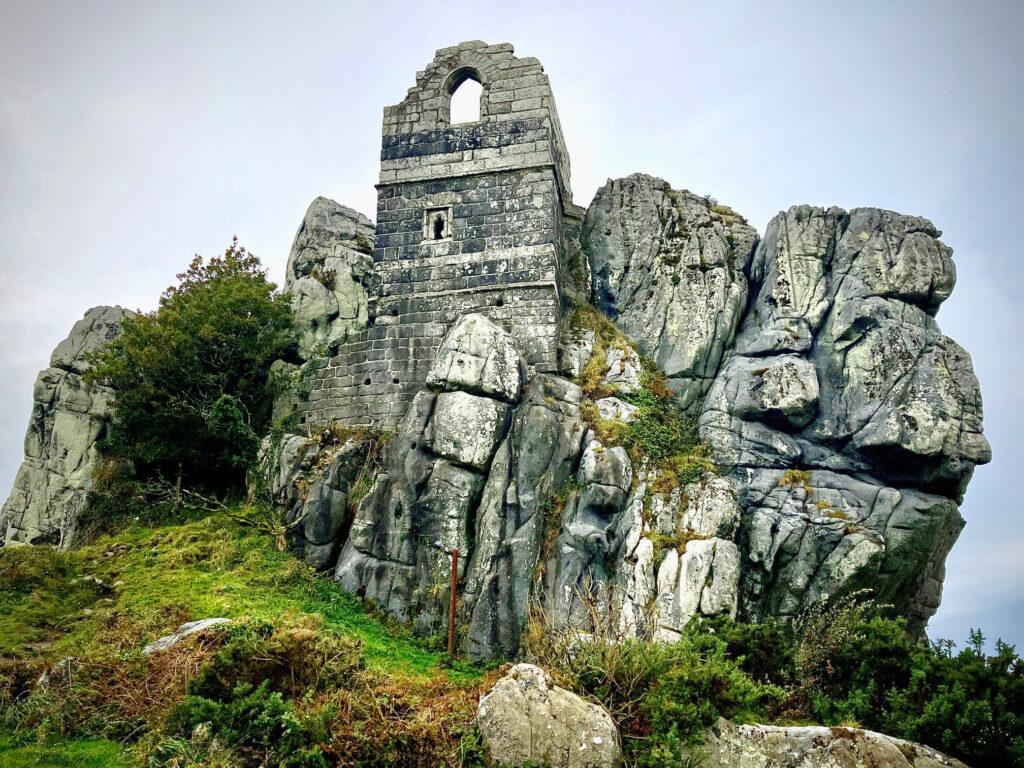
Roche Rock St Austell Cornwall: Unveiling the Secrets of a Historical Wonder
Near St Austell, Cornwall lies a hidden gem that exudes an air of mystery and historical significance—Roche Rock. This captivating landmark, perched atop a granite outcrop, offers a glimpse into the past and invites visitors to uncover its secrets.
Legends and Folklore
Roche Rock is steeped in legends and folklore. The story of St. Gonand, the hermit who sought solace within the chapel and relied on the milk of a benevolent deer for sustenance, is a tale that echoes through the ages. Additionally, the haunting legend of Jan Tregeagle, a tormented spirit said to be trapped within the rock, adds an intriguing layer to the site’s mystique. Exploring Roche Rock allows you to immerse yourself in these captivating stories, breathing life into the past.
Awe-Inspiring Panoramic Views
Beyond its historical significance, Roche Rock offers awe-inspiring panoramic views that leave visitors spellbound. As you ascend the rock, the vista unfolds, revealing a tapestry of rolling hills, emerald fields, and the majestic coastline. It is a moment to pause, reflect, and appreciate the wonders that Cornwall has to offer.
Trethevy Quoit Cornwall: Mysteries of an Ancient Megalithic Monument
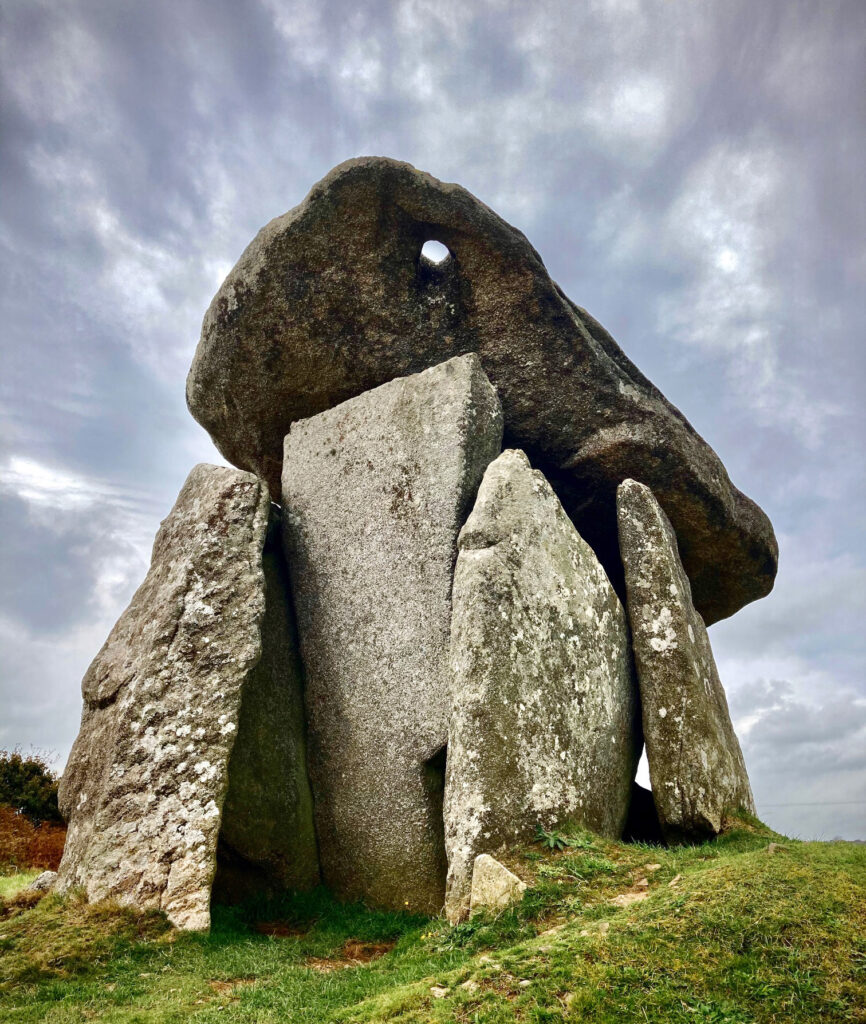
In the captivating landscape of Cornwall, lies a remarkable megalithic monument, Trethevy Quoit. Nestled amidst the picturesque countryside, this enigmatic structure has intrigued archaeologists and visitors alike for centuries.
A Megalithic Marvel
Trethevy Quoit is a megalithic tomb that dates back to the Neolithic period. This awe-inspiring structure features a massive capstone balanced delicately atop three upright stones, creating a captivating silhouette against the sky. The precise engineering and construction techniques employed by our ancient predecessors leave us in awe of their ingenuity and craftsmanship.
Archaeological Significance
Trethevy Quoit holds significant archaeological importance in understanding our ancestors’ burial practices and rituals. The monument’s positioning and orientation align with celestial events, suggesting a profound connection to astronomical observations and spiritual beliefs of the time. Its mysterious allure and captivating presence offer a glimpse into a bygone era, leaving us with a profound appreciation for the wonders of our shared history.
Secret Beaches and Coves in Cornwall
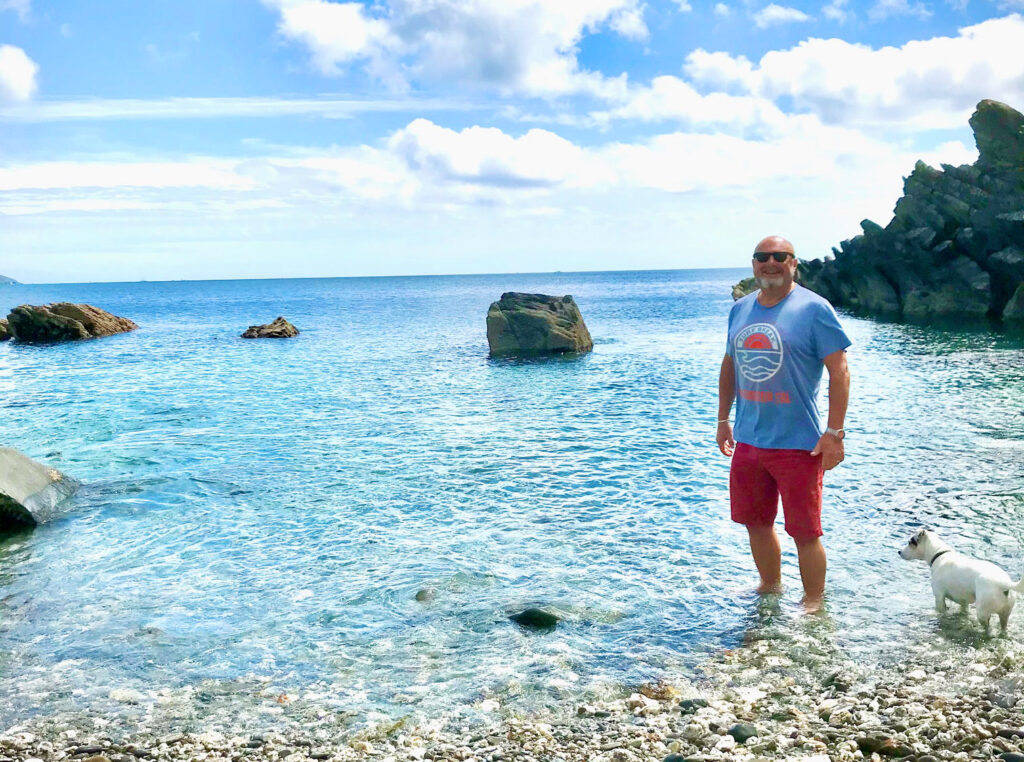
Cornwall is famous for its beaches, but there are many hidden coves and bays that are off the beaten path. These secluded spots offer visitors a chance to escape the crowds and enjoy the natural beauty of the Cornish coast. This tiny beach we discovered while walking the coastal path west of Falmouth near Rosemullion Head. The water was cold but I couldn’t resist stripping off to my boxers and going for a swim!
Unexplored Towns and Villages in Cornwall
Cornwall has many charming towns and villages that are often overlooked by tourists. From the picturesque fishing village of Mousehole to the historic town of Looe, these lesser-known places offer visitors a chance to experience authentic Cornwall.
Cornwall’s natural wonders
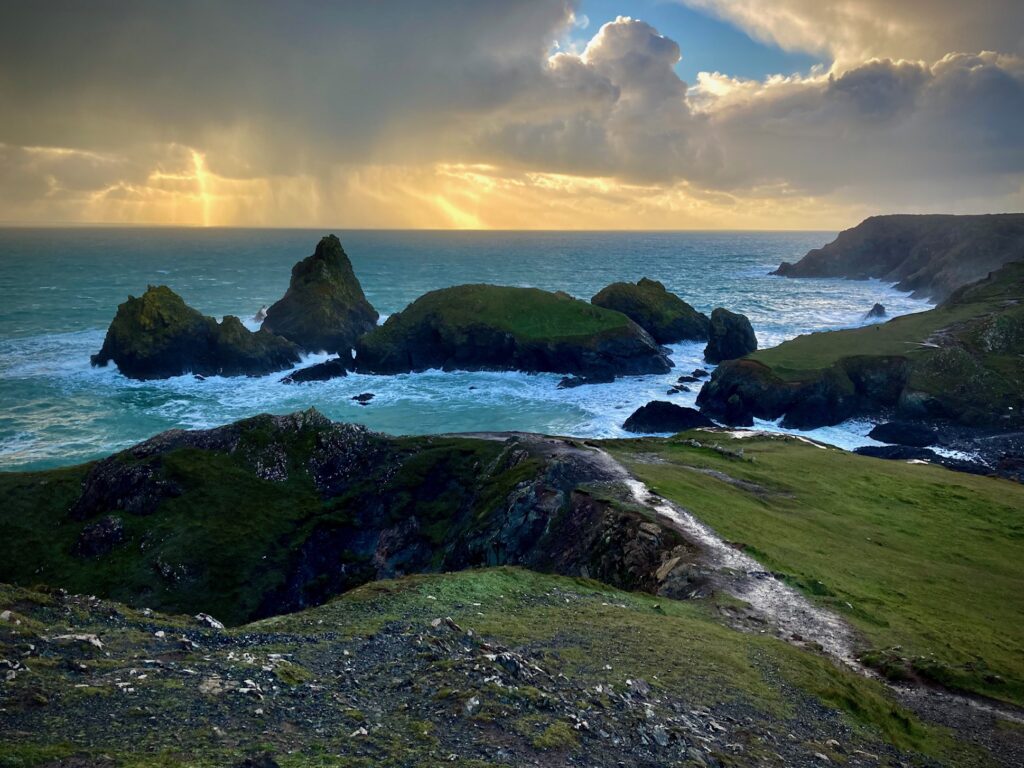
The Rugged Cliffs of Cornwall
Cornwall’s coastline is famous for its rugged cliffs and dramatic scenery. Visitors can explore the South West Coast Path, which offers stunning views of the sea, cliffs, and wildlife. The cliff-top walks are especially spectacular during the spring and summer when the wildflowers are in bloom.
Cornwall has several ancient woodlands that are full of wildlife and rare flora. Visitors can explore the dense forests of Cardinham and Idless, home to red squirrels, badgers, and birds of prey.
Cornwall’s rivers and waterfalls are often overlooked, but they are some of the most beautiful natural wonders in the county. Visitors can discover hidden waterfalls in the valleys of Bodmin Moor. Or consider exploring the tranquil rivers of the Fowey and Camel.
Cornwall is home to a rich variety of wildlife, including seals, dolphins, and rare birds
Traditional Cornish Food and Drink
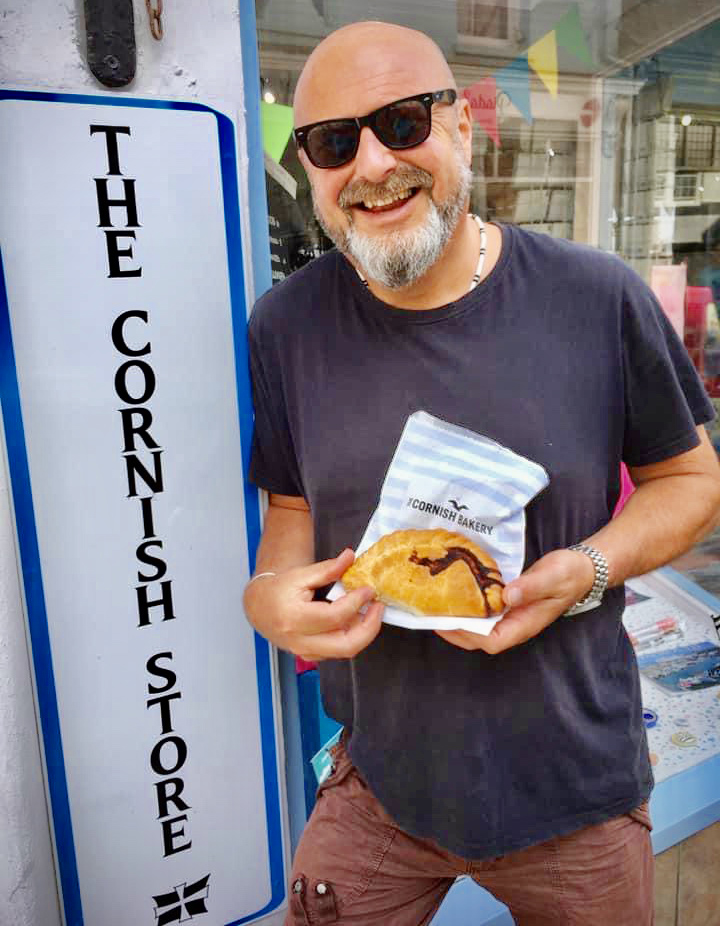
One of the best ways to experience a new place is through its local cuisine, and Cornwall is no exception. While the county is famous for its pasties and cream teas, there are many other delicious local dishes worth trying. Sample freshly caught seafood like mussels, crab, and lobster. Indulge in a hearty dish of Cornish saffron buns, hog’s pudding, or stargazy pie. Of course, no visit to Cornwall would be complete without trying a Cornish Pasty washed down with some local cider or ale.
Lesser-Known Festivals and Events in Cornwall
Cornwall is home to many unique festivals and events that offer a glimpse into the county’s culture and traditions. While many visitors flock to well-known events like the Falmouth Oyster Festival and the Padstow May Day celebrations, there are plenty of lesser-known festivals that are equally worth experiencing. From the quirky Mevagissey Feast Week to the lively Golowan Festival in Penzance, there is always something happening in Cornwall.
Unique Shopping Experiences in Cornwall
Cornwall is home to many independent shops and boutiques that offer a unique shopping experience. From handmade jewellery and ceramics to vintage clothing and artisanal food products, there is something for everyone. Head to the pretty town of St Ives for an array of art galleries and craft shops, or visit the charming fishing village of Mousehole for a selection of artisanal food shops.
Alternative Accommodation Options in Cornwall
While many visitors to Cornwall opt for traditional hotels or holiday cottages, there are plenty of alternative accommodation options that offer a unique experience. Stay in a quirky glamping pod, a cosy shepherd’s hut, or a luxurious yurt. Or for something truly special, book a stay in a historic castle or a converted lighthouse.
How to Explore Cornwall’s Hidden Gems
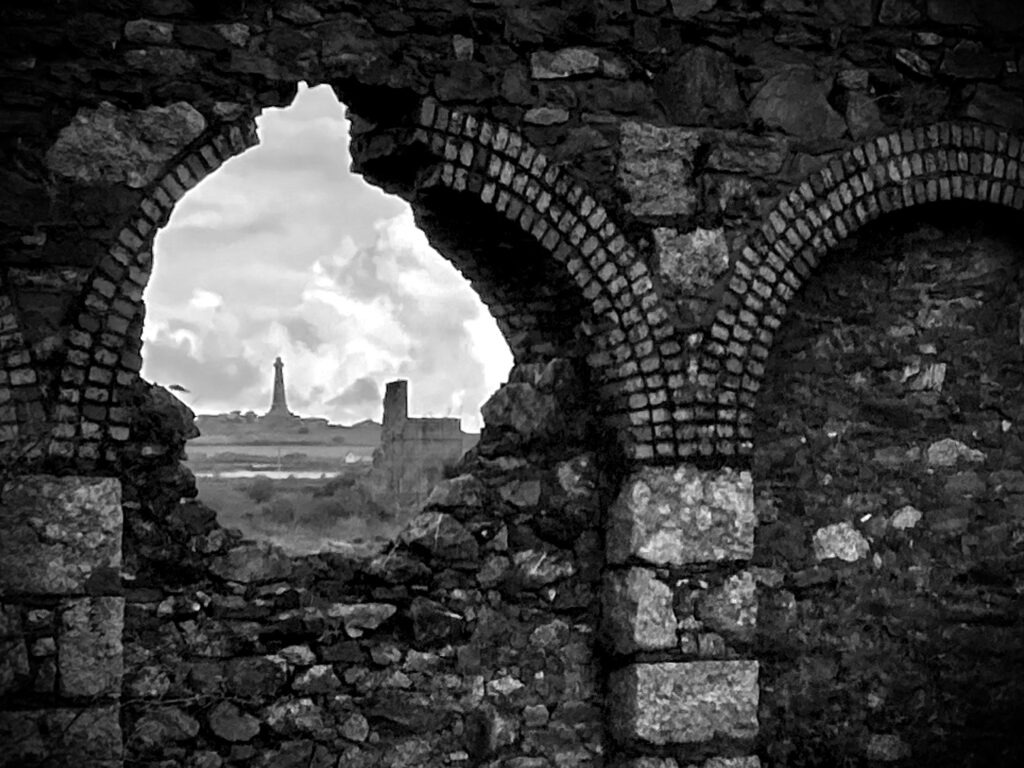
There are many ways to explore Cornwall’s hidden gems, depending on your preferences and interests. Walking and cycling are popular options, with many scenic routes to choose from. Driving is also a great way to explore the county, with plenty of picturesque villages and coastal towns to visit. And for those who prefer an organized experience, there are many tours and experiences available, from wildlife watching to historic walking tours.
Conclusion
Cornwall may be known for its popular tourist destinations, but there are many hidden gems waiting to be discovered. From secret beaches and coves to ancient woodlands and historic sites, there is something for everyone in this beautiful county. By exploring off the beaten path, you can experience the true essence of Cornwall and create memories that will last a lifetime. So pack your bags, and get ready to discover Cornwall’s hidden gems.
In the area? See our article on Dartmoor

